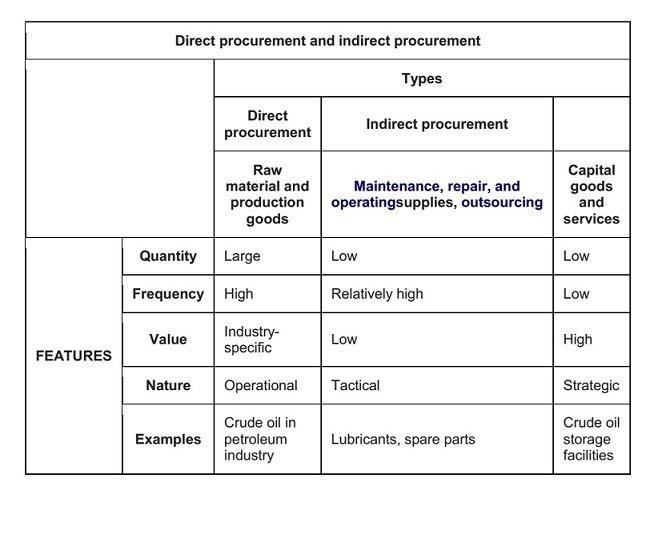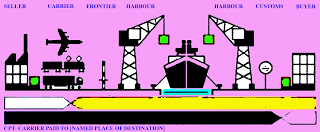Abstract
Though there is inherent uncertainty about the future, a supply chain network risk analysis can be conducted; by using information available, the future business environment can be characterized. Network design decisions have a significant impact on the performance of the supply chain. Though designing a supply-chain network can cut costs within a company, it is important to note the supply chain is not static but rather a continually improving model and adapt in response. The allocation of supply sources and markets to facilities has a significant impact on performance because it affects total production, inventory and transportation costs incurred by the supply chain to gratify customer demand. Good network design decisions increase supply chain profits, whereas poor network design hurts profit.
Keyword: Supply chain network design
Introduction
The design of a supply chain network (SCN) is an evolution of the basic supply chain. Usually, due to rapid technological advancement, organizations with a rudimentary supply chain can develop this chain into a more multifaceted structure involving a higher level of independence and connectivity between organizations, this constitutes a supply chain network. Supply Chain Network can also be used to show the flow of information and materials across different organizations. Key elements of supply chain networks are external suppliers, production centers, distribution centers (DCs), demand zones, and transportation assets.

Role of network design
Network design decisions have a significant impact on the performance of the supply chain. These decisions determine the supply chain configuration and set constraints within which other supply chain drivers can be used either to decrease supply chain cost or to increase responsiveness. Facility location decisions have a long-term impact on a supply chain’s performance because it is very costly to shut down a facility or move it to a new location. Capacity allocation decisions also have a significant impact on supply chain performance. Although capacity allocation can be altered more easily than location, capacity decisions tend to stay in place for several years. Allocating too much capacity to a location results in poor utilization, and resultant higher costs. Allocating too little capacity results in poor responsiveness if demand is not satisfied or high cost if demand is filled from distant facilities. The allocation of supply sources and markets to facilities has a significant impact on performance because it affects total production, inventory, and transportation costs incurred by the supply chain to gratify customer demand. Good network design decisions increase supply chain profits, whereas poor network design hurts profit.
Factors influencing network design decisions
Broadly speaking, network design decisions are influenced by strategic, technological, macroeconomic, political, infrastructure, competitive, and operational factors.
Framework for making network design decisions
The goal of network design is to maximize the supply chain’s long-term profitability. The process starts by defining the supply chain strategy, which must be aligned with the competitive strategy of the firm. The supply chain strategy, regional demand, costs, infrastructure, and the competitive environment are used to define a regional configuration. For regions where facilities are to be located, potentially attractive sites are then selected based on available infrastructure. The optimal configuration is determined from the potential sites using demand, logistics cost, factor costs, and margins in different markets.
Reverse Supply-Chain Network Design
A new requirement for ‘reverse supply-chain network design’ has arisen from the environmental impact of end-of-life goods. This particular network design addresses logistical issues such as collection, processing, and recycling of end-of-life goods. Companies that design both forward and reverse supply-chain processes together, with recycling & disposal in mind, have been noted to have the greatest success. Through this, organizations can support goods from production to disposal creating a ‘closed-loop system’. Bosch is a company that capitalizes on this closed-loop system by the construction of sensors into their power tool motor. Bosch can quickly assess the state of a motor reducing the cost of inspection and disposal, thereby increasing their profit margin on refurbished power tools.
Risk Analysis
Though designing a supply-chain network can cut costs within a company, it is important to note the supply chain is not static but rather a continually improving model and adapt in response. A key part of designing the supply-chain network is ensuring the network is versatile enough to cope with future uncertainties. Though there is inherent uncertainty about the future, a supply chain network risk analysis can be conducted; by using information available, the future business environment can be characterized. The uncertainties associated with supply-chain networks fall within two categories, Endogenous uncertainty, and Exogenous uncertainty. Uncertainty can be categorized as ‘endogenous’ when the origin of the risk is within the supply-chain network itself, such as market volatility or technological turbulence. Uncertainty can be categorized as ‘exogenous’ when the origin of the risk is external to the supply-chain network. Exogenous uncertainties can be further categorized; ongoing risks such as economic volatility can be described as a ‘continuous risk’. ‘Discrete’ events refer to infrequent events that could disrupt the supply-chain process, such as natural disasters. By distinguishing between these types of uncertainty, an organization can decide the best approach to risk management. A company has a very limited ability to prevent exogenous uncertainty. The risk to the supply-chain network can be minimized by being well prepared for potential events. Endogenous uncertainty can be somewhat mitigated with precautions such as regular communication between an organization and supplier.
Conclusion
Network design is a strategic subject for businesses. It calls for in-depth study to orientate crucial decisions such as siting, sizing the right number of factories, platforms, and warehouses defining the physical flows between the various links in the supply chain and distribution flows. Factors, frameworks, and risks need to consider while supply chain managers make network design decisions.
References
- Slack, Nigel; Chambers, Stuart; Johnston, Robert (2009-01-01). Operations and Process Management: Principles and Practice for Strategic Impact. Prentice Hall/Financial Times. ISBN 9780273718512.
- Trkman, Peter; McCormack, Kevin (2009-06-01). “Supply chain risk in turbulent environments—A conceptual model for managing supply chain network risk”. International Journal of Production Economics. 119 (2): 247–258. doi:10.1016/j.ijpe.2009.03.002.
- Sunil, Meindl. Peter, Kalra.D.V.(2008). “Supply Chain Management. Strategy, Planning, and Operation.” Third Edition.
- https://youtu.be/LTw3Fa6roac?si=cXIhOp5YdqDVUEZ2
- https://rumble.com/v4utza6-enhancing-supply-chain-success-with-network-design.html
- https://youtu.be/LTw3Fa6roac?si=LVNLuZ0CwJ-0Kb_p





